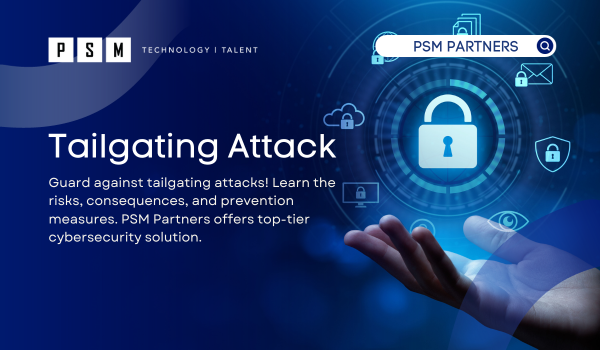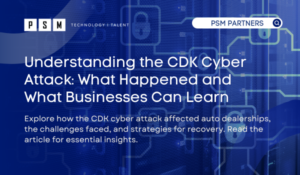Table of Contents
ToggleTailgating attacks are a growing concern for organizations of all sizes. These attacks occur when an unauthorized individual gains access to a secure area by following closely behind an authorized person through a locked door or gate, exploiting human behavior to bypass security measures. Tailgating can be intentional or accidental, but either way, it can result in significant security breaches.
The consequences of tailgating attacks can be severe. Once an unauthorized person gains access to a secure area, they can steal sensitive information, sabotage equipment, or even cause physical harm. In addition, the organization may face legal and financial repercussions if they fail to adequately protect their assets.
To prevent tailgating attacks, organizations should implement strict access control measures, such as requiring ID badges and using security personnel to monitor entry points. It’s also important to educate employees on the dangers of tailgating and encourage them to report any suspicious activity. By taking these steps, organizations can help ensure the safety and security of their employees and assets.
What is a Tailgating Attack?
Tailgating attacks are a physical security threat that occurs when an unauthorized person follows an authorized person into a restricted area. Common tailgating methods include following people into a building and sneaking in while the door is open, as well as physically borrowing a victim’s device to gain unauthorized access. This type of attack is also known as piggybacking or social engineering. The attacker gains access to the restricted area by exploiting the trust of the authorized person.
Tailgating attacks can be intentional or unintentional. An intentional tailgating attack occurs when the attacker has a malicious intent, such as stealing sensitive information or assets. An unintentional tailgating attack occurs when the attacker is unaware of the security policy or does not understand the risk associated with tailgating.
Tailgating attacks can occur in various settings, such as office buildings, data centers, hospitals, and schools. The consequences of a tailgating attack can be severe, including theft, data breaches, and physical harm.
To prevent tailgating attacks, organizations should implement security measures such as access control systems, security cameras, and security personnel. Access control systems can be used to restrict access to restricted areas and ensure that only authorized personnel can enter. Security cameras can be used to monitor the entry and exit points of the restricted area. Security personnel can be used to check the identification of personnel entering the restricted area and prevent unauthorized access.
In summary, tailgating attacks are a significant physical security threat that can be prevented by implementing security measures such as access control systems, security cameras, and security personnel. Organizations should also provide security awareness training to their employees to educate them on the risks associated with tailgating and the importance of following security policies. Tailgating is a form of social engineering attack that can be used to steal sensitive information, cause damage, or install malware, and is connected to other social engineering techniques such as phishing and vishing.
Tailgating Attacks
Physical Security Breaches
Tailgating attacks can happen in a variety of settings, but physical security breaches are the most common scenario. Physical access security measures are crucial to prevent unauthorized entry into restricted areas. In this type of attack, an attacker follows behind an authorized person to gain access to a secure area. For example, an attacker might follow an employee into a secure building or office space without proper identification.
To prevent physical security breaches, organizations should implement access control measures such as electronic access control systems, ID badges, security cameras, and security personnel. Employees should also be trained to recognize and report suspicious behavior.
Cybersecurity Intrusions
Tailgating attacks can also occur in the realm of cybersecurity. In this type of attack, an attacker gains access to a secure network or system by following behind an authorized user who has already logged in. For example, an attacker might wait for an employee to enter their password and then quickly enter the same password to gain access.
To prevent cybersecurity intrusions, organizations should implement strong password policies, two-factor authentication, and network segmentation. Employees should also be trained to recognize and report suspicious behavior, such as someone looking over their shoulder while they enter their password.
In both physical security breaches and cybersecurity intrusions, tailgating attacks can be prevented through a combination of technology, policies, and employee training. By taking proactive measures, organizations can reduce the risk of unauthorized access and protect their assets.
What are the Dangers of a Tailgating Attack?
Tailgating attacks can have severe implications for organizations. This section will discuss some of the potential consequences of these attacks.
Data Theft
One of the primary implications of tailgating attacks is data theft. Attackers can gain access to sensitive data by following an authorized person into a secure area. This information can include personal data, financial information, and intellectual property. The stolen data can be used for identity theft, financial fraud, or corporate espionage. Organizations can suffer reputational damage and legal consequences if they fail to protect their data.
Unauthorized Access
Tailgating attacks can also result in unauthorized access to secure areas. Attackers can use this access to steal physical assets, such as laptops, mobile phones, and other electronic devices. They can also plant malware or other malicious software on the organization’s network. Once inside, attackers can move laterally, gaining access to other parts of the network and causing further damage.
Potential Damages
The potential damages of tailgating attacks can be significant. Organizations can suffer financial losses due to stolen assets, legal fees, and reputational damage. They may also face regulatory fines for failing to comply with data protection regulations. The cost of repairing the damages caused by a tailgating attack can be substantial.
To mitigate the risks of tailgating attacks, organizations must implement security measures such as access control systems, security cameras, and security awareness training for employees. These measures can help prevent unauthorized access and protect sensitive information.
How to Prevent Tailgating Attacks?
Tailgating attacks are a significant threat to the security of organizations. To prevent these attacks, there are several measures that can be taken.
Increased Security Measures
One of the most effective ways to prevent tailgating attacks is to increase security measures. This can be done by implementing access control systems, such as key cards or biometric scanners. These systems can restrict access to certain areas of a building and ensure that only authorized personnel are allowed in. Additionally, security guards can be stationed at entrances and exits to monitor who is entering and leaving the building.
Employee Training
Another important aspect of preventing tailgating attacks is employee training. Employees should be educated on the risks of tailgating and social engineering attacks, and how to identify and prevent these attacks. They should also be trained on the proper use of access control systems and the importance of not letting unauthorized individuals into the building. Regular training sessions can help reinforce these principles and ensure that employees are vigilant in preventing tailgating attacks.
Technological Solutions
Technological solutions can also be used to prevent tailgating attacks. For example, video surveillance systems can be installed to monitor entrances and exits and detect any unauthorized individuals. Alarms can also be set up to alert security personnel if someone tries to enter a restricted area without authorization. Additionally, some access control systems can be integrated with other security systems, such as alarms or video surveillance, to provide an even higher level of security.
Preventing tailgating attacks requires a combination of increased security measures, employee training, and technological solutions. By implementing these measures, organizations can significantly reduce the risk of tailgating attacks and ensure the safety of their employees and assets.
Examples of Tailgating Attacks
Tailgating attacks are a common type of physical security breach. In this section, we will be discussing a few case studies of tailgating attacks to give a better understanding of how they occur and the impact they can have.
Case Study 1: The Bank Heist
In this case, a group of thieves gained access to a bank by tailgating an employee through a secure entrance. Once inside, they were able to overpower the security guard and gain access to the vault. They made off with millions of dollars in cash and valuables before being caught by the police.
This attack highlights the importance of strict security protocols, especially in high-value locations such as banks. Without proper security measures, even a single employee can unwittingly provide access to criminals.
Case Study 2: The Corporate Espionage
In this case, a competitor gained access to a company’s secure research facility by tailgating an employee. Once inside, they were able to steal valuable intellectual property and trade secrets, giving them a significant advantage in the market.
This attack shows how tailgating can be used for corporate espionage, which can have long-lasting and devastating effects on a company’s bottom line. It is essential for companies to train their employees to be vigilant and aware of potential security breaches.
Case Study 3: The Hospital Breach
In this case, an unauthorized individual gained access to a hospital’s secure area by tailgating an employee. Once inside, they were able to steal sensitive patient information, including medical records and personal information.
This attack highlights the importance of protecting sensitive information and the need for strict security measures in healthcare facilities. The breach could have serious consequences for the patients whose information was stolen, including identity theft and medical fraud.
Future Trends in Tailgating Attacks
As technology continues to advance, tailgating attacks are likely to become more sophisticated and harder to detect. Here are a few potential future trends in tailgating attacks:
Increased Use of Biometric Authentication
As more companies adopt biometric authentication methods, tailgating attackers may start to target these systems. Biometric authentication methods, such as fingerprint scanners or facial recognition, are often considered more secure than traditional password-based systems. However, these systems can still be vulnerable to tailgating attacks if an attacker is able to bypass the biometric scanner by following closely behind an authorized user.
Integration with Social Engineering
Tailgating attacks can be even more effective when combined with social engineering tactics. For example, an attacker may pose as a delivery person or repair technician in order to gain access to a secure area. As social engineering tactics become more sophisticated, tailgating attacks may become even harder to detect.
Use of Autonomous Systems
As autonomous systems become more common in workplaces, tailgating attacks may become more prevalent. For example, an attacker may be able to gain access to a secure facility by following closely behind an autonomous delivery robot. As these systems become more advanced, it may become harder to distinguish between authorized and unauthorized individuals.
Overall, it is important for companies to stay vigilant and continue to implement security measures to prevent tailgating attacks. This may include using security cameras, implementing access control systems, and providing employee training on how to detect and prevent tailgating attacks.
Preventing Unauthorized Access Through Tailgating
Tailgating attacks remain a significant security threat for organizations of all sizes. While there are a variety of measures that can be taken to mitigate the risk of these attacks, including the use of security cameras, access control systems, and employee training, no single solution is foolproof.
Organizations should take a holistic approach to security, addressing all potential vulnerabilities in their physical and digital environments. This includes implementing policies and procedures that discourage tailgating, such as requiring employees to badge in and out of secure areas and conducting regular security audits to identify potential weaknesses.
It is also important for organizations to remain vigilant and stay up-to-date on the latest security threats and trends. By partnering with trusted security experts and investing in the latest security technologies, organizations can help ensure that they are able to detect and respond to tailgating attacks before they can cause significant damage.
Overall, while tailgating attacks may seem like a relatively low-tech threat, they remain a serious risk that organizations must take seriously. By taking a proactive approach to security and implementing a comprehensive security strategy, organizations can help protect themselves against these and other security threats.
Get Enhanced Security against Tailgating Breaches with PSM
PSM Partners is your trusted ally in safeguarding your IT infrastructure through top-tier cybersecurity and incident response solutions. Based in Chicago, we specialize in providing comprehensive managed services and support to institutions.
With PSM Partners by your side, your organization gains access to cutting-edge cybersecurity technology and unmatched technical support. Don’t leave your cybersecurity to chance. Contact us today at (312) 940-7830 or submit a contact form to fortify your IT infrastructure and ensure a rapid, effective response to any incident. You deserve nothing less.
Related Insights
Understanding the CDK Cyber Attack: What Happened and What Businesses Can Learn
Key Takeaways From the CDK Global Cyber Attack Massive DisruptionOn...
Read MoreCloud Engineer vs. Software Engineer: Understanding the Differences
In today’s rapidly evolving technology landscape, both cloud and software...
Read MoreCybersecurity Jobs to Hire in 2025: Building a Strong Team for the Future
The cybersecurity job market is evolving rapidly, driven by advancements...
Read MoreWhat Users Can Expect After The NetDocuments, Worldox Acquisition
Efficient document management is the key to the success of...
Read MoreAbout the Author

James Rangel
James transitioned from a background in Asset Protection Investigations and Physical Security to the IT domain after earning a master’s degree in information security. With his investigative mindset intact, he has ascended from the Service Desk to the Risk and Security team, where he is dedicated to proactively identifying cyber threats and safeguarding client assets.





